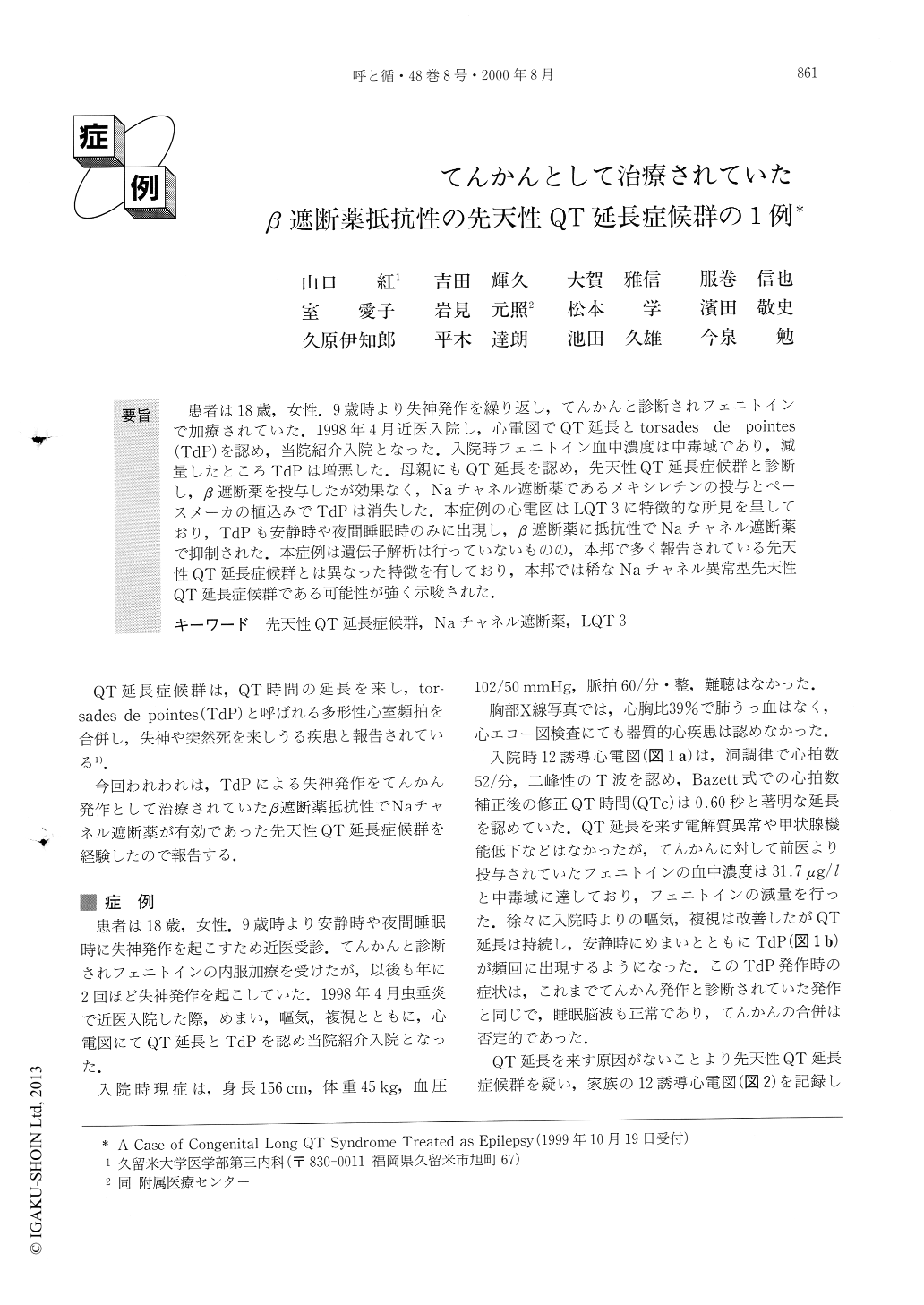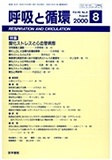Japanese
English
- 有料閲覧
- Abstract 文献概要
- 1ページ目 Look Inside
患者は18歳,女性.9歳時より失神発作を繰り返し,てんかんと診断されフェニトインで加療されていた.1998年4月近医入院し,心電図でQT延長とtorsades de pointes(TdP)を認め,当院紹介入院となった.入院時フェニトイン血中濃度は中毒域であり,減量したところTdPは増悪した.母親にもQT延長を認め,先天性QT延長症候群と診断し,β遮断薬を投与したが効果なく,Naチャネル遮断薬であるメキシレチンの投与とペースメーカの植込みでTdPは消失した.本症例の心電図はLQT3に特徴的な所見を呈しており,TdPも安静時や夜間睡眠時のみに出現し,β遮断薬に抵抗性でNaチャネル遮断薬で抑制された.本症例は遺伝子解析は行っていないものの,本邦で多く報告されている先天性QT延長症候群とは異なった特徴を有しており,本邦では稀なNaチャネル異常型先天性QT延長症候群である可能性が強く示唆された.
An 18-year-old woman with a history of frequentsyncope had received phenytoin, which possesses asodium channel blocking property, based on a diagnosisof epilepsy from the age of 9 years old. She was hospital-ized because of electrocardiographic documentation oftorsades de pointes (TdP). Because both she and hermother showed prolongation of the QT interval onelectrocardiograms, the patient was diagnosed as hav-ing congenital long QT (LQT) syndrome. When thedose of phenytoin was reduced because the serumphenytoin had reached a toxic level, TdP recurred. A β-blocker, propranolol, was ineffective in protecting thepatient against TdP, but a combination of mexiletine, asodium channel blocker, and permanent pacemakerimplantation was effective in abolishing the TdP. In thiscase, the electrocardiogram showed a typical QT pat-tern of LQT3. TdP was observed in sedentary activitiessuch as sitting or sleeping. Furthermore, TdP wasresistant to a β-blocker and sensitive to a sodiumchannel blocker. These findings are suggestive of LQT3with a sodium channel abnormality. Thus, althoughgenetic analysis was not performed, this case did notappear to be the congenital LQT1 or LQT2 syndromefrequently reported in Japan, and was considered to bethe rare congenital LQT3 syndrome.

Copyright © 2000, Igaku-Shoin Ltd. All rights reserved.


